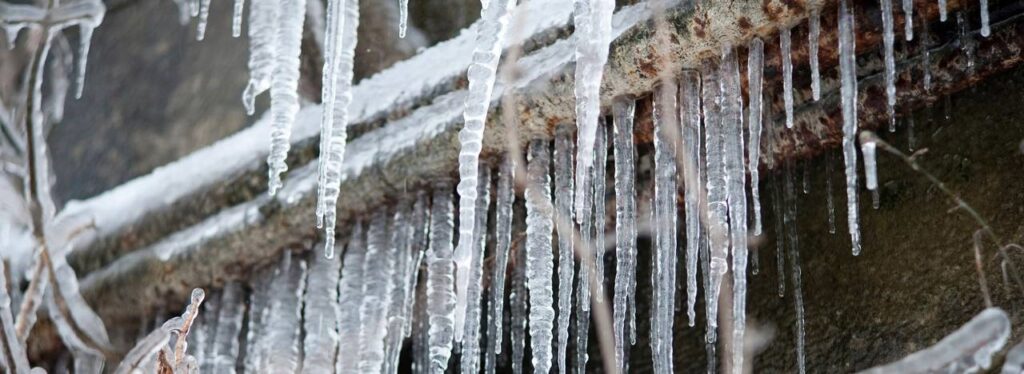Advice for Avoiding Frozen Pipes in Winter: Professional Insights
Advice for Avoiding Frozen Pipes in Winter: Professional Insights
Blog Article
The article author is making a number of great annotation on the subject of How To Avoid Freezing Pipes as a whole in the content down the page.

Winter can ruin your plumbing, particularly by freezing pipes. Right here's exactly how to stop it from taking place and what to do if it does.
Intro
As temperature levels decline, the risk of icy pipelines increases, potentially resulting in pricey repairs and water damages. Recognizing just how to avoid icy pipes is important for home owners in cool climates.
Comprehending Frozen Pipes
What causes pipes to freeze?
Pipes ice up when subjected to temperature levels listed below 32 ° F (0 ° C) for extended durations. As water inside the pipelines ices up, it broadens, taxing the pipeline walls and possibly triggering them to rupture.
Threats and damages
Frozen pipelines can result in water supply interruptions, building damage, and pricey fixings. Burst pipes can flooding homes and cause extensive structural damage.
Indicators of Frozen Pipeline
Determining icy pipelines early can avoid them from rupturing.
Just how to identify icy pipelines
Try to find decreased water flow from taps, uncommon smells or noises from pipelines, and visible frost on exposed pipelines.
Prevention Tips
Protecting susceptible pipes
Wrap pipelines in insulation sleeves or utilize warmth tape to shield them from freezing temperature levels. Focus on pipes in unheated or external areas of the home.
Heating methods
Keep indoor rooms effectively warmed, especially locations with pipes. Open cupboard doors to allow cozy air to flow around pipelines under sinks.
Safeguarding Outside Pipes
Garden pipes and outdoor faucets
Separate and drain pipes yard hose pipes before winter. Mount frost-proof faucets or cover exterior faucets with insulated caps.
What to Do If Your Pipelines Freeze
Immediate activities to take
If you presume frozen pipes, maintain faucets open to relieve pressure as the ice thaws. Make use of a hairdryer or towels soaked in hot water to thaw pipes slowly.
Long-Term Solutions
Architectural adjustments
Consider rerouting pipelines away from exterior wall surfaces or unheated locations. Include added insulation to attics, cellars, and crawl spaces.
Upgrading insulation
Purchase high-grade insulation for pipes, attic rooms, and wall surfaces. Proper insulation assists preserve consistent temperature levels and lowers the danger of frozen pipes.
Final thought
Stopping frozen pipes needs aggressive procedures and quick feedbacks. By understanding the reasons, indications, and safety nets, home owners can safeguard their pipes throughout winter.
6 Proven Ways to Prevent Frozen Pipes and Protect Your Home
Disconnect and Drain Garden Hoses
Before winter arrives, start by disconnecting your garden hoses and draining any remaining water. Close the shut-off valves that supply outdoor hose bibs and leave the outdoor faucet open to allow any residual water to drain. For extra protection, consider using faucet covers throughout the colder months. It’s also important to drain water from any sprinkler supply lines following the manufacturer’s directions.
Insulate Exposed Pipes
Insulating your pipes is an effective way to prevent freezing. Pipe insulation is readily available at home improvement stores and is relatively inexpensive. Pay close attention to pipes in unheated areas such as the attic, basement, crawl spaces, or garage. Apply foam insulation generously to create a buffer against the cold. You can also wrap your pipes in heat tape or thermostat-controlled heat cables for added warmth.
Seal Air Leaks
Inspect your home for any cracks or openings that could let in cold air. Seal any holes around the piping in interior or exterior walls, as well as the sill plates where your home rests on its foundation. Additionally, make sure to keep your garage door closed unless you’re entering or exiting. Leaving it open creates a significant air leak that can lead to frozen pipes.
Allow Warm Air Circulation
During cold snaps, it’s essential to allow warm air to circulate evenly throughout your home. Leave interior doors ajar to promote better airflow. Open kitchen and bathroom cabinets to help distribute heat consistently around the rooms. If you have small children or pets, be sure to remove any household chemicals or potentially harmful cleaners from open cabinets for safety.
Let Faucets Drip
A small trickle of water can make a big difference in preventing ice formation inside your pipes. When temperatures drop significantly, start a drip of water from all faucets served by exposed pipes. This continuous flow helps prevent the water from freezing. Additionally, running a few faucets slightly can relieve pressure inside the pipes, reducing the chances of a rupture if the water inside does freeze.
https://choateshvac.com/6-proven-ways-to-prevent-frozen-pipes-and-protect-your-home/

I have been very intrigued by How To Avoid Freezing Pipes and I really hope you enjoyed reading the article. Please pause to share this blog entry if you enjoyed reading it. We thank you for your readership.
Booking Page Report this page